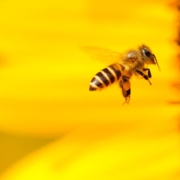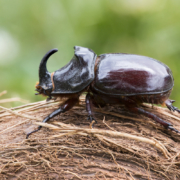EPA Adds Chitosan to the List of Active Ingredients Eligible for Minimum Risk Pesticide Exemption
This original announcement was published by the EPA on November 9, 2022. Click here for more information.
Today, the U.S. Environmental Protection Agency (EPA) finalized a rule adding chitosan (Poly-D-Glucosamine), a naturally occurring substance found in the cell walls of all crustaceans, most fungi, and the exoskeletons of most insects, to its minimum risk pesticide exemption list. In doing so, EPA is specifying that the listing also includes those chitosan salts that can be formed when chitosan is mixed with the acids that are listed as active or inert ingredients eligible for use in minimum risk pesticide products.
The purpose of the exemption list is to eliminate the need for the Agency to expend significant resources to regulate products deemed to be of minimum risk to human health and the environment. Products that contain only those active and inert ingredients allowed by the exemption and meet certain Federal Insecticide, Fungicide and Rodenticide Act (FIFRA) requirements are exempt from the normal FIFRA registration requirements. Approximately a decade has passed since a substance was added to the list of ingredients eligible for the minimum risk pesticide exemption.
Chitosan is currently registered with EPA under FIFRA as a fungicide, antimicrobial agent, and plant growth regulator that boosts the ability of plants to defend against fungal infections. Chitosan is currently widely available to the public for non-pesticidal uses, and has established applications in various industries including textiles, cosmetics, beverage processing, and water treatment.
On October 10, 2018, EPA received a petition from Tidal Vision Products, LLC requesting that chitosan be added to the list of active ingredients allowed in exempted minimum risk pesticide products. In November 2020, EPA requested comments from the public on a proposed rule to add chitosan to the list of active ingredients eligible for the exemption. In November 2021, EPA requested additional information from the petitioner on chitosan salts and their potential effect on the environment. In response, received two aquatic toxicity reports which were made available for public comment via a Notice of Data Availability in May 2022.
After reviewing the latest available science, reviewing comments on the proposed rule and on the Notice of Data Availability, EPA is now adding chitosan to its list of active ingredients eligible for EPA’s minimum risk pesticide exemption. The Agency’s analysis of the available data suggests that chitosan and chitosan salts are of low toxicity to humans and no environmental risks of concern have been identified. As a result of this final rule, chitosan products will no longer need to be registered under FIFRA. EPA estimates this action will result in cost savings of up to $116,000 initially and about $3,400 per year thereafter for registrants and manufacturers of chitosan-containing pesticide products.
The final rule is available in docket EPA-HQ-OPP-2019-0701 at www.regulations.gov.







